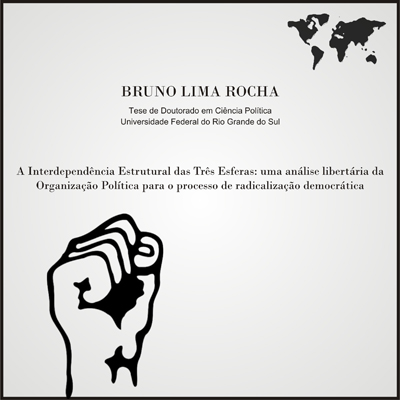

.jpg)
















|
Original Content in English The civil war in Syria and the new arrangement of the Arab and Islamic world
Bruno Lima Rocha, September 2013, before the Russia arrangement through U.N. Security Council
Initial comment: On the eve of a US Navy attack against the positions of the government of Bashar al-Assad, I return to a text written in the first half of July, but still unpublished on this site. As I explain below, unfortunately the Arab Cause and the anti-imperialist intentions in the region have found themselves subordinated to the geopolitical logic of pivot states such as Turkey, Iran and Saudi Arabia. The end of a dictatorial regime ends and the beginning of a civil war between Sunni and Shiites on a large scale. The next decade will be one of pure uncertainty in the harshest theatres of Eurasia. The Syrian State had been ruled for decades by a triad. The top career officers linked to the Ba'ath Party (Arab National Party), a non-programmatic legacy of the times of pan-Arabism of Nasserist inspiration; the al-Assad clan - the current head, Bashar, like his father Hafez, acting as secular dictators, almost despots; and last but not least, the Alawites, an offshoot of Shiite Islam origin with roots in the region.
It is the relationships of these alliances that go to make up both the blocks that support the challenged Ba'ath regime and the Assad clan, and the groups that are forming against this established, institutionalized power - mingling with the State. Without falling into the illusions that are typical of a more western vision of the region, the first exclusion is that a liberal, democratic and secular sector is practically non-existent in the Syrian rebellion. Therefore the revolt, which is also one for fundamental rights, does not imply the building of a stable democracy but the rise to power of groups excluded from it by Assad. If there are no radical liberals or convinced democrats, one can imagine how few socialist ideas of any kind are present there.
The Assad regime is supported internally by the clan together with the Alawites together that part of the senior officer class that is still loyal and the urban middle classes with links to the State. Externally, it has support from a regional power, Iran, and an armed theocratic Lebanese party which is a satellite of that country, Hezbollah. Hezbollah is a tributary of Khomeini's Iran, whose intelligence network used Syria as a safe corridor and sanctuary in the fight against the Zionist presence in southern Lebanon. In addition to Iran and the various Shiites in the region - especially the Iraqis, where they are in government - the Syrian government has Putin's Russia as a strategic ally and receives supplies of weapons and currency from this global power, as well as diplomatic pressure and media coverage.
The opposition, with the exception of the Kurds settled in Syria and organized into the Democratic Union Party (PYD) which has links to the Kurdistan Workers Party (PKK), is made up of Sunnis and supported, directly or indirectly, by two regional powers. The opposition is made up of dissident members of the armed forces, who have established the Free Syrian Army, an irregular force that the western media mistakenly considers closely connected to the Syrian National Council. This is unreal and is more like a distorted mirror than a reflection of the true situation. In the first line of the clashes are militias of all kinds, notably Wahhabi jihadists, of the same branch of Sunni Islam as Saudi Arabia - which supports them - including groups from Al-Qaeda. Beside these, there are fundamentalist Salafis, also irreconcilably opposed to any secular proposal. The other regional power that provides support to the opposition is Turkey, including refugee camps and a certain flexibility for dissidents along the long common border. Indirectly, the insurgency ends up getting support from Israel, through the exercise of air supremacy and the continuing bombings against Syria.
Although the Assad regime is a bloody, inhuman dictatorship, the same methods can and should be attributed to the opposition. The suspected use of Sarin gas first fell on the Ba'ath forces and, by April 2013, UN investigators revealed evidence of its use by the fundamentalist Sunni militias. Recently shadowy images of a fundamentalist Sunni fighter cutting out the heart of a fallen enemy who had fallen on the battlefield embody the kind of motivation and involvement of the irregular anti-Assad militiamen. The expectations for the expansion of democracy and secular thought are today far from the Arab Spring and the Syrian Insurgency and Civil War. This space is occupied primarily by jihadists of Sunni origin, both Wahhabis and Salafists. I emphasize that these two lines of political-religious thought organized like Islamized societies, reinforcing more conservative behaviour.
Text originally published in "Jornalismo B", an independent fortnightly from Porto Alegre. English translation by FdCA - International Relations Office.
|

